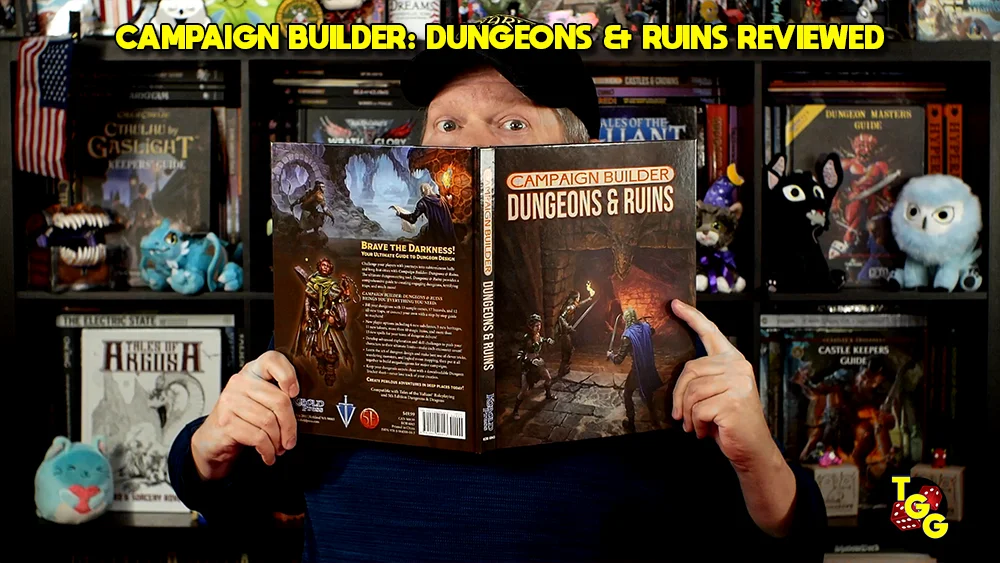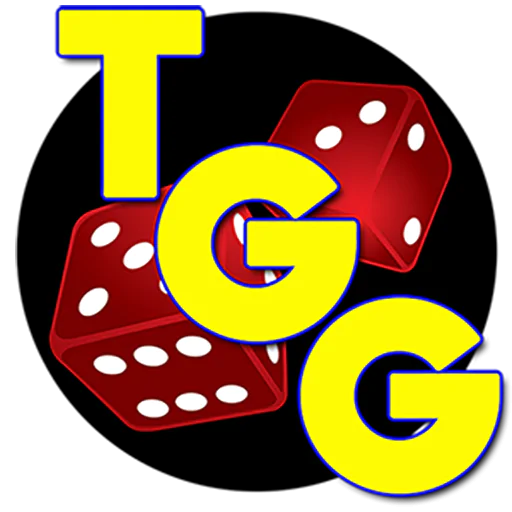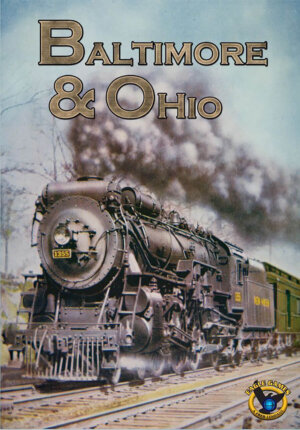
Publisher: Eagle Games
Designer: Eddie Robbins
Year: 2010
Players: Three to six Players
Ages: 16+
Playing time: Three Hours
MSRP: $59.99 U.S.
As I take a look at Eagle Games new edition of the 2009 Winsome Games release, Baltimore & Ohio, let’s get the bad out of the way right up front; I mean really bad. I know many gamers can be (and are) wowed by beautiful game boards, cleverly presented rules with extensive examples of play, dazzling and colorful counters and so on. If you fall into that category of gamer let me assure you that you won’t be needing any sunglasses to protect your peepers from the glory of the graphic design of this game. In fact you might consider turning the lights in the room down just enough so you can barely see the game board (and for the most part the rest of the components) while you play.
In other words, this is one ugly game my friends. Seriously, there isn’t another word that comes to mind. The graphic design of this title is stunning in it’s ineptitude and there were times while playing I was in fear my eyes would begin to bleed simply from the sheer awfulness gazed upon. I’ve heard it mentioned that Eagle has spruced up the look from the original Winsome release so I can only guess how horrific that edition looked…
Also if you’re turned off by a lot of math in a game you’ll find that level of discomfort bumped up to the Nth degree with Baltimore & Ohio. And I’m not just talking about math, I’m talking about MATH! Players might be best served bringing a scientific calculator to the table and I may even go so far as to recommend having a laptop on hand to run Ken Boone’s excellent computer assistant to tackle the nonstop record keeping. If you’re a gamer who doesn’t dig math you’re going to want to include this into the equation (pun intended…)
At this point you’re probably thinking, “Jeff’s going to rip this game and Reiner Knizia didn’t even have anything to do with it? What’s up with that?!?!?!”
Ah ha! That is where you’d be wrong though.
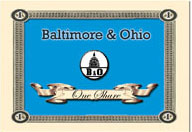
It’s a real credit to how much fun can be had with Baltimore & Ohio that, despite being the obviously least attractive date at the prom AND that prom date also keeps tossing algebraic formulas at you all night long, the game is seriously worthy of making its way onto your gaming table.
I’ll admit I haven’t played too many railroad games. I don’t have anything against them per say but the couple I did tackle just left me cold. One had so much luck involved I felt as if I spent the entire game just hoping I would draw a particular card or two. If I’m going to play something where my main input is wishing for certain cards to come up in a certain order then I might as well play Texas Hold ‘Em. The other game was just so bland and lifeless once it was over it probably would have taken me a moment or two to recall the theme of the game was railroads. I mention this because I’m certainly no expert in this genre; I’d be hard pressed to tell you the difference between 18xx and XXX…
Baltimore & Ohio seems to be a different breed than what’s out there – although I could be wrong. Luck plays absolutely no factor in the game. There are no die rolls or randomly drawn cards. That leaves winning or losing completely up to the players. If you think on your feet when you need to and can put together some semblance of a strategy you’ll be in a good position to win the game. And the name of that game is show me the ducats! Who built the biggest railroad, has the most track, owns the most stock doesn’t matter. It’s all about the money and how much of it you have when the game ends. Of course having the biggest railroad, the most track, tons of stock helps but at the end of the day it’s all about the Benjamins.

Players start as wannabee railroad moguls and what freight gets moved where and how do the laborers lay track doesn’t matter one iota – players have bigger fish to fry as opposed to figuring out what gauge to lay. There are ten historical railroads included in the game and each player can be the president of more than one company at a time. Company presidents don’t worry about the little things and the players don’t as well. A couple of the railroads do have restrictions as to where they can lay track until they fulfill their historical obligations but that’s just the price they pay for doing business.
Each game turn breaks down into three rounds. The first is the market round in which stocks are bought and sold as well as stock value determined. Players may also start a new railroad in this round. It’s important to remember that the person who holds the most stock in a railroad is the president of that railroad regardless of who started the company. Opponents can cagily swoop in and snatch control of your precious railroad if you aren’t careful.
The second round is the business round. Players always resolve their rounds in order of railroad stock value; the highest stock value goes first, second highest second and so on. In this round players can scrap old equipment in order to raise capital, purchase new equipment and build new track. As in any railroad game you want your track to actually connect cities together because that will put more money in your coffers. Investing in new equipment can lead to a jump in the technology level which affects the value of cities, cost of maintenance and the limit of track hexes that can be built. Gross profits are calculated and maintenance is paid for each railroad then the determination is made if your company is profitable or not.
Woe to those who are not running profitable railroads. Stock prices drop fast and you’ll soon find that your stocks will be an easy buy for your opponents to grab up thus losing you control of the railroad. A series of bad decisions can lead a player not to elimination exactly but to what amounts to a seat on the sidelines and that can lead to a bit of frustration for that player.
The third round is simply a repeat of another round of business. At the end of each turn a check is made to see if the victory conditions have been met. The game ends if Technology level six is reached or if a stock is valued at $375. The player with the most money wins and, if there’s a tie, whoever has the lowest player order (remember order is determined by stock value) takes the crown.
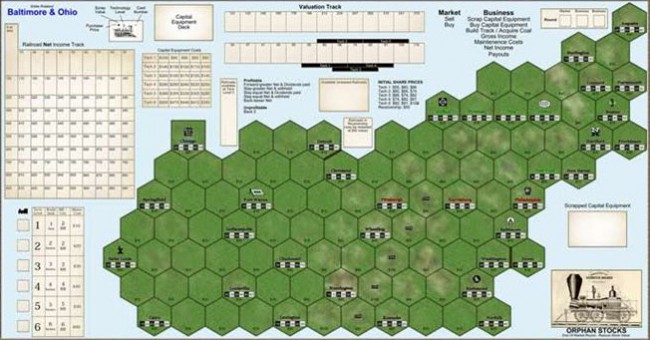
The rules for the game are only eight pages long and it doesn’t take a whole lot of time to wrap your head around how Baltimore & Ohio is played. Your first game could clock in at over four hours but repeated play – and the help of that laptop – can bring the time involved down to less than three hours. Keep in mind the rules are easy to learn but that doesn’t mean there isn’t a lot of meat to the game.
There’s a lot of depth here and good planning (or scheming) is going to payoff big time. There are no lucky die rolls or turns of a card to doom a good strategy just as there is no bail out for poor decision making. This is one of the game’s biggest draws in my opinion; play poorly and you will lose while playing well can easily lead to victory.
Baltimore & Ohio reminds me, in a way, of that friend everyone has had in some point in life. Sure they may have not been the greatest looker around and your pals all wondered why you even hung out with them. Yet your friend had so much personality and was such a blast to spend time with you really didn’t care what anyone had to say. And what may have been glaring imperfections to some soon became unnoticeable to yourself.
[rwp-review id=”0″]
- Tiny Cyberpunk has Landed in PDF - Apr 25, 2025
- Gary’s Appendix: Hardcover Omnibus is Up for Crowdfunding - Apr 25, 2025
- Save on the Coyote & Crow RPG through Bundle of Holding - Apr 25, 2025













